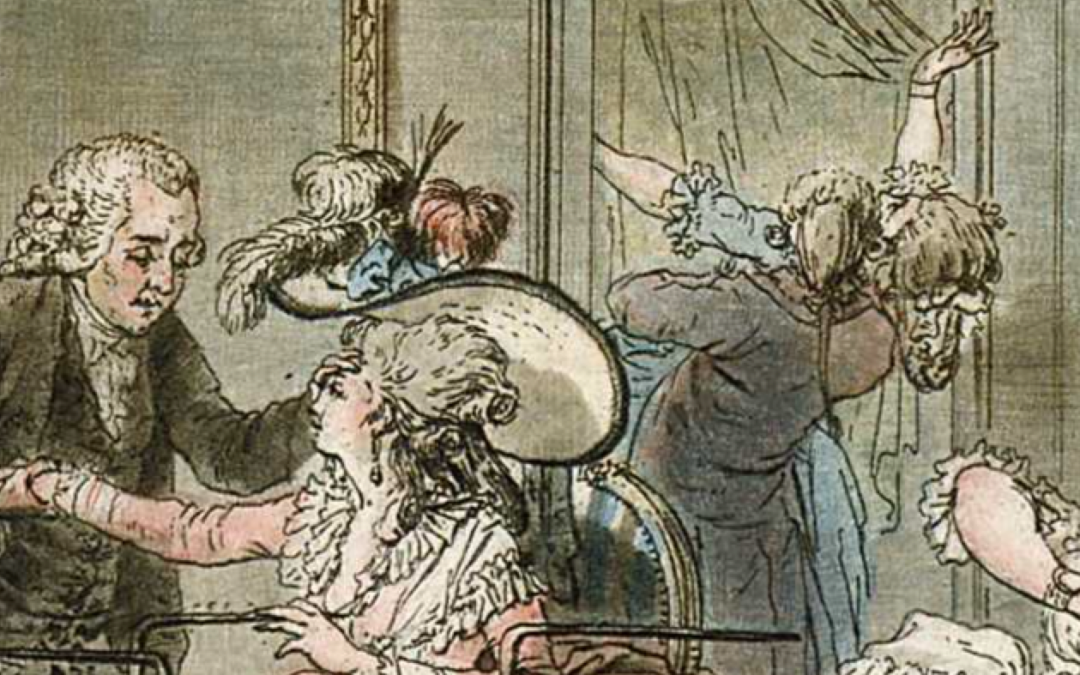—If a global map of the places of the Enlightenment were drawn up, the resulting image would be full of light and dark.—
At the end of the eighteenth century, many activities related to science had found spaces for their development, such as private salons, social gatherings, cafes, theatres, public squares, etc. In addition to these public places, other more academic territories also experienced a great expansion. There was the creation of a large number of new academies in very different parts of the world, from St. Petersburg (created in 1724) and Berlin (founded in 1700, and remodelled later in the middle of the century) to Barcelona (in 1764), passing by Bordeaux (1712), Uppsala (1728) or Dublin (1785). New societies were also created such as the Norwegian Society of Sciences (1760) in Trondheim; the Academy of Sciences and Fine Arts in Naples (1778) or the Royal Academy of Sciences in Lisbon (1779). Many of these academies organised courses and published journals with articles dedicated to topics that we would now consider ‘scientific’, all intertwined with very diverse themes of economics, politics, literature and the fine arts, hardly trying to solve the question of continuity between these.
Universities also underwent significant reforms. It was a period of crisis for some of the oldest, such as those of Oxford or Heidelberg. A visitor to the Oxford laboratory, located in the basement of the Ashmolean Museum during the seventeenth century, would be surprised by the state of the instruments, which were dirty, messy and almost all broken, as well as the lack of interest in resolving the situation from Professor Richard Frewin, who, as happened with his successors, combined separate careers in medicine and experimental sciences. For others like Leiden or Montpellier, these were periods of prosperity and growth. In Leiden, there was a commitment to the teaching of experimental physics associated with new instruments, demonstrations and manuals. As in other universities, the teaching of chemistry, under the direction of Herman Boerhaave, was taught in clear connection with medicine, although its content went far beyond medical issues. Chairs of chemistry, experimental physics and botany emerged in many other European universities, more or less connected with the other spaces mentioned above, and under the protection of public authorities, philanthropic societies and individuals.

Science Museum of the University of Coimbra remodelled in the 1770s after the reform of the Marquis of Pombal. Turismo en Portugal.
With the remodelling of the courses there was also a reorganisation of content and disciplines. New teaching spaces were created, including laboratories and amphitheatres for public demonstrations, the university population increased and the number of interested people attending the courses as mere entertainment also grew, without the need for a complete course of study. In Portugal the main reforms occurred during the years of the Marquis of Pombal, in the 1770s, who carried out a major remodelling of the University of Coimbra and created a new building to house the natural history collection and an experimental physics cabinet, in addition to a laboratory. That building is now the Science Museum of Coimbra. All these changes allowed science-related subjects to play an increasing role in the training of educated Europeans, without displacing the classical culture that continued being the fundamental core of university education. The process incorporating scientific subjects took place with particular intensity in the new educational institutions in the first years of the French Revolution, the Écoles Centrales that would become the beginnings of the subsequent lycées and secondary education. What is more, the courses in academies, lycées and universities, aimed at diverse audiences, overlapped with the public demonstrations of street teachers such as François Bienvenu, and experiments carried out in cafés, theatres and salons by enthusiasts and private individuals. Among all these spaces, a vigorous circulation of people, instruments, products and experimental practices was established, which were remodelled in this transition, at the same time as acquiring greater visibility and legitimacy as a source of knowledge, usefulness and entertainment for the growing bourgeois society.
The growing social legitimisation of science opened the door to new forms of collaboration with political and economic powers. Although this collaboration can be traced back to very early times, as we have seen in our journey through science in Enlightenment in Sabers en acció, the new political conceptions of enlightened governments created new possibilities. In Prussia, along with the development of cameralism policies, members of the government enrolled authors related to chemistry or medicine, seeking to apply their expert knowledge in decision-making, while obtaining a source of legitimacy. This led to a rhetoric related to the public uses of science, which is one of the hallmarks of those years in some countries. For example, one of these authors of political economics, Johann Heinrich Gottlob von Justi, professor at Göttingen in 1755, wrote a manual in which he criticised the useless sciences, those which did not pursue common good. He stated that that metaphysicians, philologists, and astronomers were the beggars, gamblers and drunkards of the academic world. They deserved expulsion from the university.
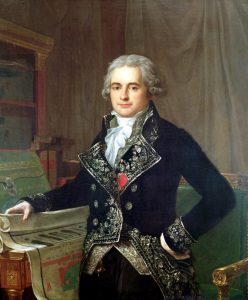
Jean-Antoine Chaptal, Count of Chanteloup, portrayed by Charles Lemonnier. In his hands he holds a map of the new buildings of the School of Medicine. Wikipedia.
In France, enlightened Bourbon governments extensively employed experts trained in science or medicine for the management of mines, factories and civil works. The French Revolution was a decisive period in this regard. It is true that academies and universities were closed during the first years, partly under the egalitarian and anti-elitist tendencies of the first revolutionary governments that saw in these institutions as part of the ingredients of the Ancien Régime that they fought to remove. In reality, after the first revolutionary years, updated and much more dynamic centres were built, with younger teachers who were more open to new ideas. The new institutions quickly attracted students from all over the world. When talking about the anti-academic feeling of the French revolutionaries, it is common to quote the sentence supposedly said by one of the judges who condemned the chemist Antoine Lavoisier to the guillotine: “The Republic has no need of savants”. Regardless of the veracity of this fact, the truth is that many chemists, some of them colleagues of Lavoisier, ended up being ministers or responsible for important areas during the final years of the eighteenth century. Thus, the years of the French Revolution introduced new forms of collaboration between science and political and economic powers, with the arrival of scientific authors in positions of responsibility in governments: famous chemists and doctors ended up holding important positions during the Revolution and the Empire. This trend can be illustrated by two biographies: those of Jean-Antoine Chaptal and Lazare Carnot. The former was appointed inspector of gunpowder during the revolution and later Napoleon’s Interior Minister, where he would inspire important laws related to education, science and industry. The second was the father of the famous Sadi Carnot, a key figure in the development of thermodynamics. Lazare Carnot, less known for his scientific contributions than his son, held various positions during the Revolution and the Empire, becoming Napoleon’s Minister of War.
New consulting boards, such as public hygiene committees, were also established to manage health issues in cities. The outcome of these trends was diverse and filled with light and dark. The historian Thomas Leroux has shown that the presence of many more people with scientific training did not mean an improvement in protection against industrial risks to health and the environment in general. The new committees were generally favourable to the interests of industry, in part because many academics also had interests in this area. One way to achieve these objectives was to introduce greater evidentiary demands, putting requirements way out of reach of the possibilities of the victims, who could easily see their complaints rejected for lack of scientific basis. This example shows that the advances in science in various educational, economic and political fields during the eighteenth century were not always associated with social progress and public usefulness, as is regularly repeated by some Enlightenment publicists, who created a powerful and highly tenacious rhetoric.
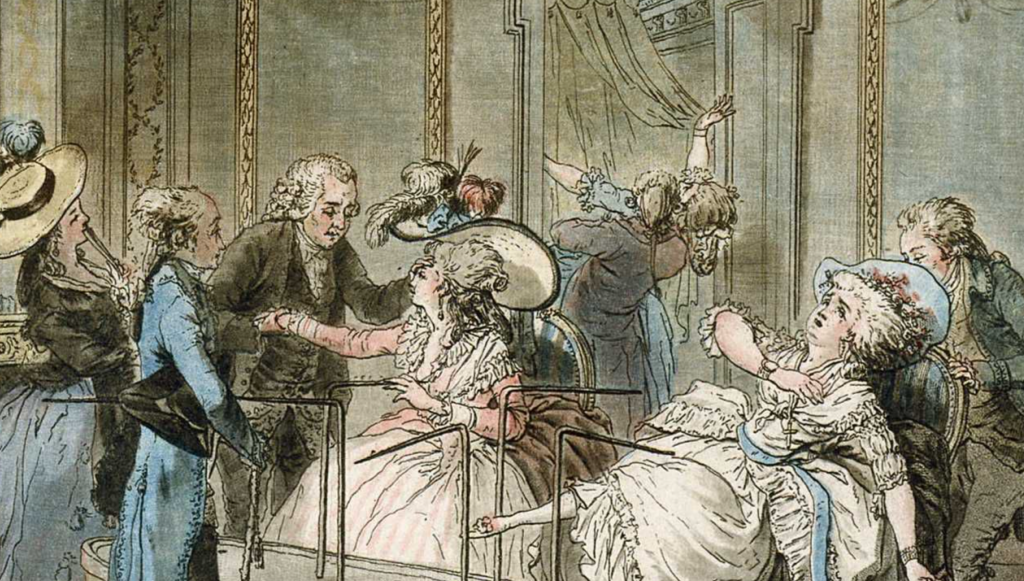
Session on animal magnetism at the end of the 18th century by Laurent Guyot and Antoine Sergent. In the centre is an instrument for producing electricity by rubbing. Bibliothèque National de France.
The legacy of the Enlightenment is therefore diverse, ambiguous and contradictory. For well-known American historian, Robert Darton, the end of the Enlightenment and the arrival of the Romantic movement, with its greatest interest in the irrational, could be represented by the popularity of mesmerism, a group of authors who circulated throughout Europe carrying out demonstrations with phenomena they called “animal magnetism”. They were inspired by the work of the Swiss physician Franz Mesmer, who claimed to be able to heal by methods that would now seem more like hypnotism sessions intermingled with magnetic and electrical phenomena, if a current equivalent could really be found. Widespread among the wealthy classes, mesmerism sessions were very popular among the general population, and also caused a deep controversy in the academic context. According to Darton, due to its popular and anti-academic character, mesmerism would set off a Romantic reaction to the rationalism of the Enlightenment.
This well-known interpretation is now widely discussed, partly through a rethinking of the role of science in the public sphere. There were a large number of activities similar to mesmerism that were well integrated into academies and universities. An example are the street demonstrators who walked through the cities with magical lanterns, electric sparks or coloured explosions produced by the new gaseous fluids, as seen in the case of Bienvenu. Connections with the Romantic period were also strengthened through various tendencies. The works of Giuseppe Galvani would inspire the works of the University of Bologna professor, Giovanni Aldini, who would use electricity in experiments to resurrect corpses, also well-known and controversial in the early nineteenth century. These types of demonstrations in anatomical theatres, together with experiments in experimental physics and chemistry, carried out in public and private spaces, served as inspiration for many works of Romanticism, including the Mary Shelley’s famous story, Frankenstein, written in 1817. It is not easy to draw a line to separate all these practices, which would continue for quite some time over the next century. This mixture of ingredients is diverse, to some extent contradictory, and is perhaps a good image of the Enlightenment, as it is conceived today.
Finally, another of the issues that has been rethought is the geography of the Enlightenment. It has become necessary to speak of Enlightenments in the plural because they displayed very different traits from Edinburgh to Berlin or Madrid. Local studies have shown a wide variety of realities throughout various European countries, which do not coincide with the stories usually focused on France, England or Central Europe. This diversity is even wider if we consider more distant territories such as America, India or China, where historical events developed in a very different way from those noted here, and their inclusion allows us to verify the strong Eurocentric biases present in the usual accounts of science and the Enlightenment. Viewed globally, the interactions between all these processes were also complex and resulted in unequal exchanges and diverse hybridisations, through the channels opened up by travel and mediators of various kinds, including commercial companies. All this gave rise to original productions in the field of botany, medicine and cartography, of varying relevance according to the different settings.
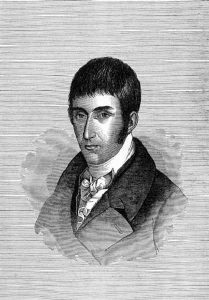
Francisco José de Caldas (1768-1816). Wikipedia.
For American authors, the eighteenth century was the period of great botanical expeditions and other great exploration endeavours with mainly imperial purposes. However, research was also carried following local agendas, sometimes related to the beginning of the processes of independence that came to their culmination in the last third of the eighteenth century, in the American revolution, and at the beginning of the nineteenth century, in the independence of the former colonies of the Spanish empire. In these processes of independence, authors related to science such as Benjamin Franklin (in the USA) or Francisco José Caldas (in the viceroyalty of New Granada, later part of the territory called Colombia) played a decisive role. Some of them, as in the case of Caldas, paid with their lives for their involvement in these processes.
In China, on the other hand, there were deep-rooted intellectual traditions that interacted with new knowledge from Europe, sometimes in the hands of religious orders such as the Jesuits during the seventeenth century, which would lead to strong tensions during the eighteenth century. At the same time, from both Asia and the Americas, very diverse materials, objects, techniques and knowledge, the product of imperial plunder and commerce, would continue to arrive. For example, botanical expeditions to South America would collect a large number of pharmaceutical products, such as cinchona, obtained from the bark of a South American tree from which quinine would later be extracted in the early nineteenth century. This product became one of the most important medicines for the following centuries.
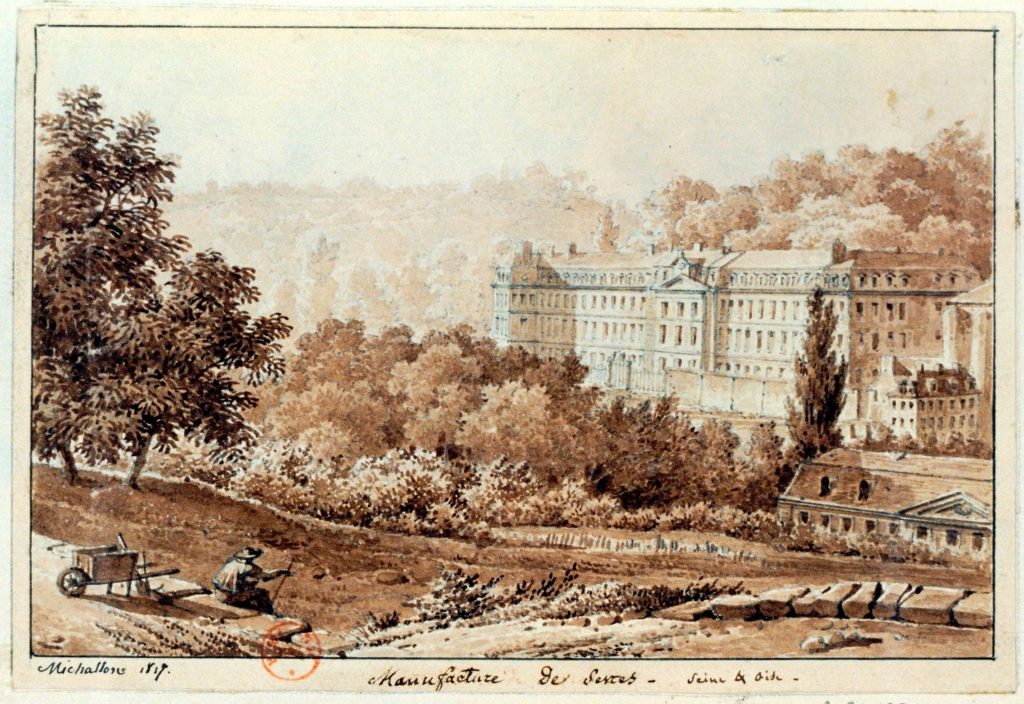
The porcelain factory in Sèvres, one of the most important in Europe, where important French chemists worked. Wikipedia.
Another object of commercial interest in the eighteenth century was porcelain, a luxury product imported from China up until that century. Several authors worked to adapt porcelain production in Europe, sometimes through spying missions and more or less successful testing of procedures. Finally, factories were installed in many parts of Europe, at the head of which were placed people with training in sciences, such as Pierre-Joseph Macquer or Jean-Antoine Chaptal, who used their knowledge in the reorganisation of practices and the improvement of production. However, they were unable to fulfil all expectations regarding the usefulness of science in industrial manufacturing.
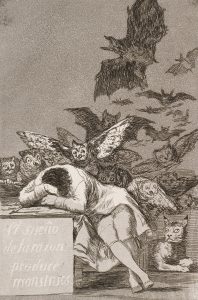
The Sleep/Dream of Reason Produces Monsters. Engraving by Francisco José de Goya. Wikipedia.
Through these enterprises, located between science, technology and commerce, the processes of Western colonisation advanced and were reinforced in the following centuries. The arrival of Western physicians and other science-related authors was one more ingredient in this process of colonisation, albeit with complex reactions and consequences. On occasion, as happened with Napoleon’s famous expedition to Egypt, the academic reports of the expeditions would serve to initiate a plundering of specimens, antiquities and documents that was also used for the construction of a certain image of the East – irrational, defeated and servile – at the beginning of those tendencies that Edward Saïd has called “Orientalism”. According to Saïd, the expedition unleashed processes between East and West that still dominate our political and cultural visions.
In a way, the traditional accounts of the Enlightenment, in which this period is portrayed as the years of the “triumph of reason”, have played a role similar to the expedition to Egypt, by reinforcing Eurocentric images that are presented as an unavoidable part of social and cultural progress. Instilled in the common sense of the European populations, these perceptions, like the various forms of ‘Orientalism’, have served to justify colonial domination, invasions and even genocide, often under the pretext of the establishment of certain forms of modernity. All this light and dark must be taken into account when analysing the features of science, technology and medicine during the century that is called the Enlightenment. Perhaps these new images of the Enlightenment, understood as a plural, diverse and global process, can be represented through the creative ambiguity of the phrase in Goya’s famous engraving: “The Sleep/Dream of Reason Produces Monsters”.
José Ramón Bertomeu Sánchez
IILP-UV
How to cite this paper:
Bertomeu Sánchez, José Ramón. The dreams of reason. Sabers en acció, 2020-12-30. https://sabersenaccio.iec.cat/en/the-dreams-of-reason/.
Find out more
You can find further information with the bibliography and available resources.
Recommended reading
Clark, William et al. eds. The Sciences in Enlightened Europe. Chicago: University Press; 1999.
Pestre, Dominique et al. eds. Histoire des sciences et des savoirs. Paris: Éditions du Seuil, 2015.
Porter, Roy (ed.) The Cambridge History of Science. Eighteenth-Century Science. Cambridge Univ. Press; 2003.
Studies
Bennett, Jim; Talas, Sofia, eds. Cabinets of Experimental Philosophy in Eighteenth-Century Europe. Leiden: Brill; 2013.
Bensaude-Vincent, Bernadette; Blondel, Christine, eds. Science and Spectacle in the European Enlightenment. Aldershot: Ashgate, 2008.
Bleichmar, Daniela (ed.). Science in the Spanish and Portuguese Empires, 1500-1800. Standford: University Press; 2009.
Carneiro, Ana, Simoes, Ana, Diogo Simoes, Maria P. “Enlightenment Science in Portugal: The Estrangeirados and Their Communication Networks.” Social Studies of Science. 2000; 30 (4): 591–619.
Crawford, Matthew J. The Andean Wonder Drug: Cinchona Bark and Imperial Science in the Spanish Atlantic, 1630-1800. Pittsburgh: University of Pittsburgh Press; 2016.
Darton, Robert. Mesmerism and the End of the Enlightenment in France. Cambridge, MA: Harvard University Press; 1986.
Fara, Patricia. An Entertainment for Angels. Electricity in the Enlightenment. Cambridge: Icon Books; 2002.
Gillispie, Charles Coulston. Science and Polity in France at the End of the Old Regime. Princeton: Princeton University Press; 1980.
Gillispie, Charles Coulston. Science and Polity in France: The Revolutionary and Napoleonic Years. Princeton: Princeton University Press; 2004.
Le Roux, Thomas. Le Laboratoire des Pollutions Industrielles : Paris, 1770-1830. Paris: Albin Michel; 2011.
Mcclellan, James E. Science Reorganized: Scientific Societes in the XVIIIth Century. New York: Columbia University; 1985.
Morus, Iwam. Frankenstein’s Children. Electricity, Exhibition and Experiment in Early-Nineteenth-Century London. Princenton: University Press; 1998.
Morus, Iwam. “Radicals, Romantics, and Electrical Showmen: Placing Galvanism at the End of the English Enlightenment.” Notes and Records of the Royal Society. 2009; 63: 263–76.
Powers, John. Inventing Chemistry. Herman Boerhaave and the Reform of the Chemical Arts. Chicago: Columbia College Chicago Press; 2012.
Raj, Kapil. Relocating Modern Science. Circulation and the Construction of Knowledge in South Asia and Europe, 1650-1900. New York: Palgrave; 2007.
Ruestow, Edward G. Physics at Seventeenth and Eighteenth-Century Leiden: Philosophy and the New Science in the University. The Hague: Martinus Nijhoff; 1973.
Said, Edward. Orientalism Madrid: Libertarias; 1990.
Suay-Matallana, Ignacio; Bertomeu Sánchez, José Ramón “François Bienvenu y la popularización científica en la Ilustración: demostraciones experimentales, entretenimiento y públicos de la ciencia.” Enseñanza de las ciencias: revista de investigación y experiencias didácticas. 2016; 34 (2): 167–84.
Wakefield, Andrew. The Disordered Police State. German Cameralism as Science and Practice. Chicago: University Press; 2009.
Williams, Richard, John S. Rowlinson, and Allan Chapman. Chemistry at Oxford: A History from 1600 to 2005. Oxford: Royal Society of Chemistry; 2008.
Sources
Ampère et l’histoire de l’éléctricité. With numerous texts by this and other authors.
Francisco José de Caldas, Complete Works. Available here.
Les Merveilles du Magnétisme suivies des aphorismses de Mesmer (Paris, 1857) . Available here.
Philosophical Transactions. One of the most important academic journals of the eighteenth century. Available here.
Websites and other resources
European porcelain from the eighteenth and nineteenth centuries. Available here.

